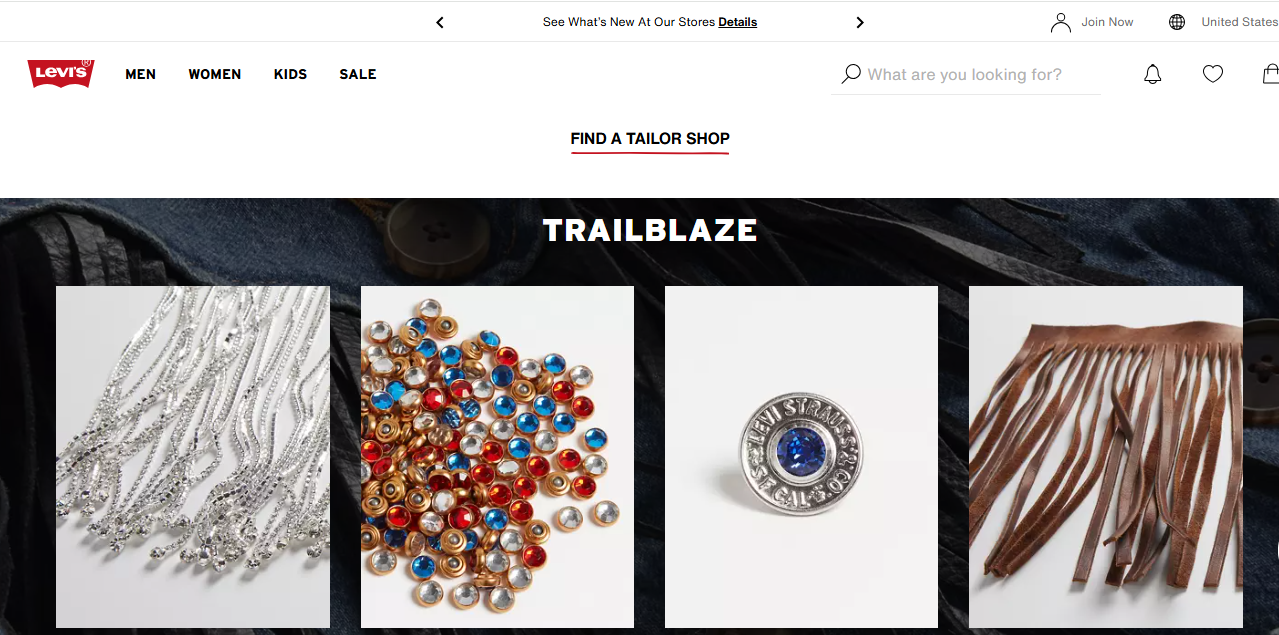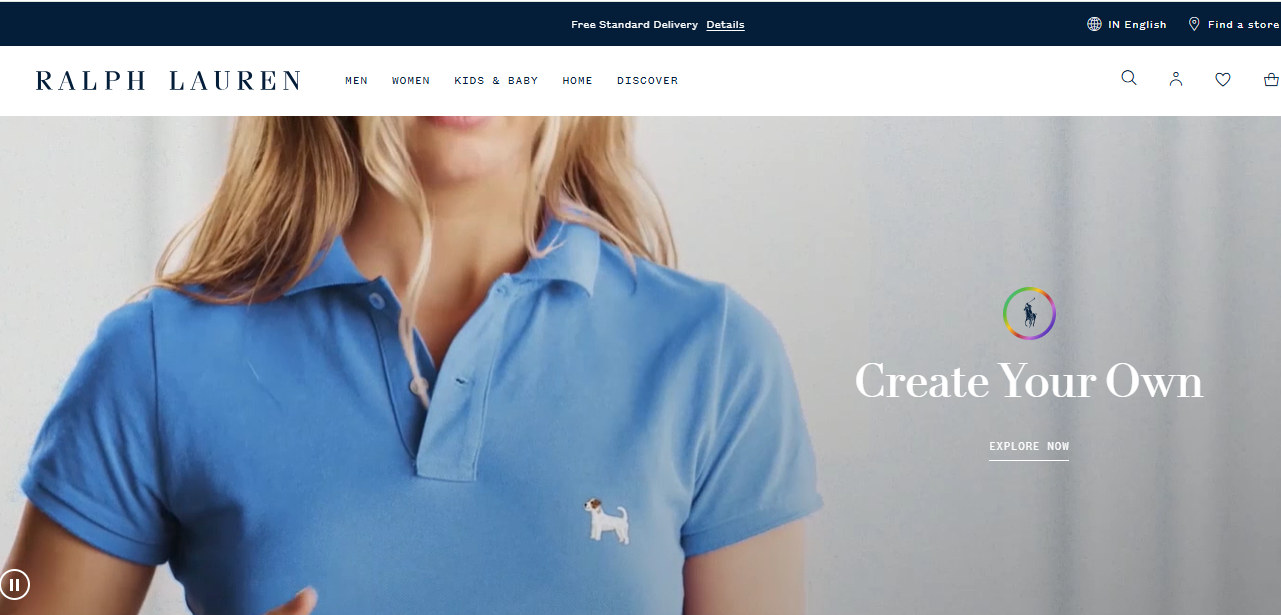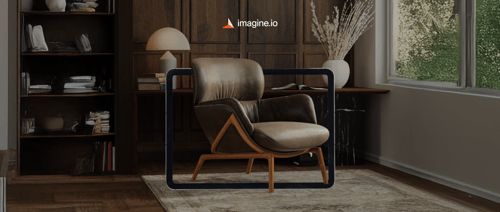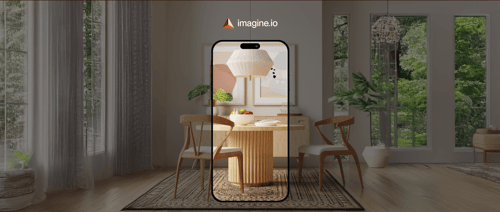What makes customers feel truly connected to a brand? Often, it’s when they get the chance to make a product of their own. That’s exactly what product customization offers—allowing buyers to choose colors, materials, features, or even add personal details that reflect their style and needs.
But first, let’s understand what product customization really means. At its core, it’s about giving customers control in the design process, transforming a standard product into something unique. For businesses, this approach isn’t just about novelty—it’s a powerful way to boost loyalty, drive repeat purchases, and stand out in crowded markets.
In this blog, we’ll explore the best product customization examples across industries and uncover how these strategies can inspire your own business growth. Before we dive in, if you want to see how brands are already scaling personalization using 3D, check out our success stories — like how a leading furniture brand cut their photography costs by 80% using imagine.io’s 3D pipeline.
Get the latest updates straight to your inbox.
By clicking sign up you'll receive occasional emails from imagine.io. You always have the choice to unsubscribe within every email you receive.
What is Product Customization?
Product customization is the process of allowing customers to personalize a product’s design, features, or functionality to match their individual preferences.
Instead of offering a “one-size-fits-all” solution, customization empowers buyers to take part in the creation process—choosing everything from colors and materials to technical specifications and add-ons.
For businesses, product customization is more than just a marketing tactic—it has become a powerful, value-driving strategy that directly impacts how buyers make decisions.
By allowing customers to explore and personalize the final product visually, brands can boost buyer confidence, reduce hesitation, and deliver a shopping experience that feels uniquely tailored and far more memorable.
In today’s digital-first economy, customization is no longer limited to print-on-demand t-shirts or engraved mugs.
With 3D visualization and AI-powered configurators, companies can now offer real-time interactive experiences across industries like fashion, furniture, electronics, and even home goods like mattresses.
Talk to our experts to explore how you can do the same.
Amazing Examples of Product Customization
Customization isn’t just a fancy add-on anymore—it’s what gets customers hyped, keeps them loyal, and puts real money back in the bank. Let’s break down how top brands across industries are killing it with product customization:
-
Sinomax
Sinomax transformed its product visualization by shifting from traditional photography to 3D workflows with imagine.io. With hyper-realistic visuals, customers can see every detail—stitching, layers, foam density, and fabric textures—before they buy.
This level of transparency reduces confusion and sets accurate expectations. As a result, Sinomax cut imaging costs by 80%, launched products much faster, and lowered return rates because shoppers had a clear, interactive understanding of the product.
Shoes
There are multiple examples of product customization in the footwear industry, with big names like Nike and Converse leading the way.
These brands let customers design sneakers by choosing colors, fabrics, laces, or even adding initials—turning standard shoes into personal style statements.
-
Nike By You

Nike By You gives customers full control over sneaker design by allowing them to select colors, swap materials, and even add personal initials. This creates a sense of ownership because the final product feels unique, not mass-produced. The process builds strong customer loyalty as buyers feel proud of designing their own shoes.
-
Converse Custom

Converse lets customers create their own version of the classic Chuck Taylors. Buyers can choose everything from the canvas color and lace style to embroidered initials. Because Converse is such an iconic brand, the ability to put your own twist on it transforms a simple shoe into a creative fashion statement.
Health & Beauty
There are multiple examples of product customization in the health and beauty industry, with brands like Function of Beauty and Curology leading the way.
These companies allow customers to personalize skincare and haircare by choosing ingredients, formulas, and preferences—turning everyday routines into tailored self-care experiences.
-
Function of Beauty

Function of Beauty lets users create custom shampoo and conditioner formulas by choosing their hair type, hair goals (such as shine, curl definition, or volume), and even select fragrances and colors. This ensures every bottle is unique, delivering a sense of exclusivity and effectiveness that builds brand loyalty.
-
Prose

Prose is a US-based haircare brand that creates personalized shampoos, conditioners, and styling products. Customers take an in-depth online quiz covering hair type, goals, lifestyle, and even environment. Based on this, Prose formulates a unique product blend tailored to the individual. This makes haircare feel luxurious, highly personal, and results-driven.
Furniture
In the furniture industry, customization has become essential for helping buyers find pieces that fit their unique spaces, styles, and lifestyles.
When combined with 3D configurators and AR, customization becomes even more powerful—letting shoppers visualize materials, finishes, and layouts in a realistic, interactive way.
-
Sarreid Ltd.

Sarreid Ltd. transformed its product visualization workflow by switching from traditional photography to imagine.io.
With 3D rendering and variant generation, they cut photography costs by nearly 80% and accelerated content production by 50%, making it easier to showcase customizable furniture options with consistent, high-quality visuals.
-
IKEA Kreativ

IKEA offers a virtual design tool where customers can personalize furniture choices, colors, and layouts in 3D. Buyers can visualize products in their own homes before ordering. This customization isn’t just aesthetic—it’s practical, ensuring furniture fits perfectly into each lifestyle.
Jewelry
Jewelry is deeply personal, and brands like Pandora have made customization central to their identity. By allowing customers to mix charms, engrave messages, or choose metals, they transform accessories into meaningful keepsakes.
-
Pandora Jewelry

Pandora is another great example of product customization as it gives customers the power to design their own charm bracelets. With endless options of charms, metals, and engravings, each bracelet becomes a personal story. Instead of selling jewelry as just accessories, Pandora creates an emotional journey for every customer.
Clothing
Customization in clothing gives buyers both style and individuality. Brands like First Manufacturing Co., Hockerty, Levi’s Tailor Shop, Ralph Lauren Custom Polo, etc., allow customers to design leather jackets or suits that match their lifestyle, taste, and personality.
-
First Manufacturing Co.

The First Manufacturing company brand allows customers to go beyond “off-the-shelf” leather jackets. Buyers can adjust the fit, finishes, and even add patches to make the jacket uniquely theirs. Instead of feeling like just another product, it becomes part of the customer’s identity, creating a strong emotional connection with the brand.
-
Hockerty

Hockerty offers custom tailoring online. Customers select fabrics, linings, lapels, and jacket styles, all from their computer. This approach gives people the feeling of bespoke luxury without the need to visit a physical store. It combines convenience with style and appeals to buyers looking for unique, custom clothing experiences.
-
Levi’s Tailor Shop

Levi’s Tailor Shop enables customers to personalize denim with embroidery, patches, and unique finishes. By giving buyers the freedom to design their jeans or jackets, Levi’s turns everyday denim into a canvas for personal expression.
-
Ralph Lauren Custom Polo

Ralph Lauren Custom Polo offers a made-to-order experience for polo shirts, letting customers pick sleeve length, color blocks, stripes, and add custom text or embroidery. This turns a classic polo into a uniquely personal wardrobe essential.
Glasses
Eyewear brands like Oakley and Cartier make glasses more than functional—they’re fashion and lifestyle statements. By offering customization, they give buyers the chance to design eyewear that fits their style, sports needs, or luxury tastes.
-
Oakley

Another one of the amazing brands that offer customization is Oakley. It makes eyewear personal by letting customers customize frames, lens colors, and even engravings.
This ensures the glasses fit both their style and lifestyle needs, whether for sports or fashion. Instead of selling generic shades, Oakley allows buyers to create something that feels like their own, building strong brand loyalty.
-
Custom Cartier by Hall of Frame

Cartier offers exclusive customization options for their glasses. Customers can choose finishes, adjust details, and engrave personal touches-—perfect for buyers seeking customizable products with luxury appeal.
For high-end buyers, exclusivity is key, and this approach ensures their purchase feels rare and personal. It elevates the product from simple eyewear into a symbol of luxury and uniqueness.
Phone Accessories
The phone accessories market thrives on individuality, and brands like Casetify make customization both fun and social. Customers can upload photos, add patterns, and even share their designs online.
-
Casetify

Casetify takes phone case customization to a social level. Customers can upload photos, use popular patterns, or design their own cases. Many of these designs are shared online, turning products into viral content. This combination of personalization and social sharing makes the brand highly appealing to younger, style-conscious buyers.
Watches
Luxury watchmakers like Tag Heuer offer customization options that turn timepieces into personal heirlooms. From dials and straps to engravings, every detail can reflect a buyer’s personality and milestones.
-
Tag Heuer

Tag Heuer’s customization options let watch enthusiasts adjust dials, straps, and engrave personal messages. Since watches are symbols of personal style and success, this level of customization ensures customers feel a deeper connection to their purchase.
Food
Even food can be customized, with brands like M&M’s making it possible to add messages and designs. This transforms everyday snacks into personalized, celebratory experiences.
-
M&M’s

M&M’s personalized candy idea lets buyers print names, initials, or short messages on each chocolate. This simple change makes the product feel special for gifting and celebrations. It transforms a low-cost snack into a fun, shareable experience. The strategy helped M&M’s boost sales and brand visibility worldwide.
Sporting Goods
In sports, customization makes equipment part of an athlete’s identity. Brands like Superare offer custom boxing gear that reflects confidence and individuality in the ring.
-
Superare

Superare specializes in customizable boxing gear. Fighters can choose glove colors, add their names, or even logos. This personalization makes the gear feel like part of the athlete’s identity. In a sport where confidence and individuality matter, this approach creates strong emotional value and brand loyalty among customers.
Bags
Bags are daily essentials, and customization makes them both functional and stylish. Brands like Timbuk2 let customers design backpacks that suit their lifestyle and aesthetic.
-
Timbuk2

Timbuk2 offers fully customizable backpacks where buyers can select fabrics, straps, and colors. Instead of carrying a generic bag, customers get something that fits their personal lifestyle and look. Because bags are used daily, these designs naturally get noticed, turning customers into promoters of the brand everywhere they go.
Automotive
The automotive industry sets the gold standard for customization, with brands like Porsche, Mercedes, Lamborghini, BMW, and Audi offering immersive configurators. Customers can tailor everything from paint and trims to interiors and tech features.
-
Porsche Car Configurator

Porsche’s configurator lets customers design their dream car in detail. They can choose paint colors, interiors, trims, and watch it all come to life in real time. This makes the buying process interactive and exciting. The sense of involvement keeps customers engaged and increases the desire to purchase.
-
Mercedes Configurator

The Mercedes Car Configurator lets buyers personalize everything from exterior paint and alloy wheels to luxury interior trims.
This digital-first experience reduces showroom friction and helps customers explore multiple models online. It’s considered one of the top tools in the all car configurator space because of its ease of use and premium presentation.
-
Lamborghini Configurator

Lamborghini takes customization to an ultra-luxury level. With its Lamborghini Configurator, customers can select bespoke colors, interior finishes, and unique trims. This makes each supercar feel like a one-of-one creation—appealing to buyers who want exclusivity and personalization at the highest level.
-
BMW Configurator

The BMW Configurator focuses on blending performance with personalization. Customers can compare trims, choose features, and even explore 3D wheel configurator options. This level of interaction builds excitement and helps buyers make confident decisions about complex vehicles.
-
Audi Configurator

With the Audi Configurator, customers can choose packages, technologies, and performance upgrades. It goes beyond looks by letting buyers visualize advanced driver-assistance features and tech add-ons—turning the process into a 3D web configurator experience.
If these examples sparked ideas for your own brand, talk to our experts at imagine.io. We’ll help you create interactive 3D customization experiences that match your products, scale your catalog, and boost buyer confidence—just like the brands you saw above.
Top Benefits of Product Customization
Here are some key advantages of product customization:
- Increases Customer Satisfaction
At its core, product customization is about giving the customer exactly what they want. When buyers have control over how a product looks, feels, or functions, they’re more emotionally invested in the purchase.
This sense of ownership naturally leads to higher satisfaction and long-term appreciation for the product. A customer who designs their own office chair, for example, will value it far more than a generic one because it reflects their unique needs.
-
Boosts Conversion Rates
Shoppers abandon carts when they feel unsure about a purchase. Customization eliminates this uncertainty.
When customers can interact with a configurator, change colors, swap materials, or preview features in 3D, they see a clear representation of what they’re buying.
This not only builds confidence but also reduces decision fatigue. For businesses, this translates into higher conversion rates and faster sales cycles.
- Reduces Product Returns
Returns eat into profit margins and logistics budgets. One of the main reasons customers return products is a mismatch between expectation and reality. Customization bridges this gap by letting customers define and preview exactly what they’re ordering before checkout.
With 3D product visualization tools (like imagine.io), buyers can rotate, zoom, and even view products in their own space via AR—virtually eliminating the “this isn’t what I thought I was getting” problem.
-
Strengthens Brand Loyalty
Companies that customize products build deeper relationships with their buyers, because customers feel like co-creators rather than just consumers. This collaboration deepens brand loyalty because the product feels personal and unique.
When businesses invest in personalization, they’re not just selling items—they’re building experiences that customers want to repeat. Over time, this loyalty translates into repeat purchases, referrals, and long-term brand advocacy.
-
Creates Upselling Opportunities
Customization tools often present buyers with tiered options—basic, premium, luxury. For example, someone configuring a sofa may start with a standard fabric but upgrade to a premium leather once they see the difference visually.
These moments of discovery are powerful for revenue growth. Businesses can use configurators to strategically highlight higher-margin options, leading to increased average order value (AOV) without feeling pushy.
-
Provides Valuable Market Insights
Every customization choice tells a story about what customers value most. Do buyers consistently choose eco-friendly fabrics?
Are certain color palettes more popular in specific regions? This data gives businesses a competitive advantage by identifying trends early and aligning product development with real consumer demand.
Unlike generic sales data, customization insights provide a deeper understanding of buyer intent, helping brands stay ahead of shifting market expectations.
How to Get Started with Product Customization
Launching product customization doesn’t have to be overwhelming. Here’s how businesses can take the first steps:
- Understand your audience – Identify what customers value most. Do they care about style, sustainability, or performance? Customization should always align with their priorities.
- Start small – Begin with simple options like colors, engravings, or bundle builders before scaling into full product configurators.
- Use technology wisely – Leverage tools like 3D visualization, AR, and interactive configurators that let customers preview designs in real time. This boosts confidence and minimizes returns.
- Highlight customization in marketing – Showcase examples of customized products in ads, social media, and product pages to inspire buyers and build trust.
- Measure and adapt – Track which customization features customers choose most. Use these insights to refine products, expand options, and align future strategies.
If you’re looking for a platform to make this process seamless, imagine.io helps businesses scale product customization with 3D renders, AR previews, and interactive configurators—no costly prototypes or complex setups required.
How imagine.io Powers Product Customization
For many businesses, the gap isn’t in understanding the value of customization—it’s in executing it. Physical samples are costly, photoshoots slow down launches, and customers often hesitate when they can’t visualize what they’re buying.
For complex products like mattresses, furniture, or electronics, showcasing every option—or even internal details—becomes a real challenge. Scaling this across dozens (or hundreds) of SKUs? Even tougher. This is where imagine.io makes customization seamless and scalable:
- 3D Visualization at Scale – Eliminate costly prototypes and reshoots. Create photorealistic renders for every variant directly from product data.
- Interactive Product Configurators – Let buyers swap fabrics, colors, finishes, or specs in real time—building confidence and reducing hesitation.
- AR Try-Before-You-Buy – Enable shoppers to place products in their own space, ensuring the perfect fit both functionally and aesthetically.
- Cost & Time Efficiency – Cut down on sample production, accelerate go-to-market timelines, and free creative teams from repetitive content bottlenecks.
With imagine.io, you’re not just offering customization—you’re delivering interactive buying experiences that reduce friction, build trust, and drive conversions.
Final Thoughts
The product customization examples we explored—from shoes to cars—show how personalization turns ordinary items into memorable experiences.
By embracing customization in marketing and offering customizable products, businesses build loyalty, reduce returns, and unlock new growth opportunities. Ready to transform your catalog with customizable brands? Talk to our experts today and start creating interactive product experiences your buyers will love.


.gif?width=1296&height=1296&name=Untitled%20design%20(8).gif)




.png?width=500&name=How%20to%20Add%20a%203D%20Product%20Configurator%20to%20Your%20WordPress%20Website%20(Complete%20B2B%20Guide).png)
















%20(1).png?width=500&name=Why%20Exploded%20Mattress%20Views%20Matter%20(And%20How%20to%20Generate%20Them)%20(1).png)
.png?width=500&name=Best%20Shopify%20Product%20Configurator_%20How%20to%20Choose%20the%20Right%20One%20(2).png)
.png?width=500&name=Why%20Exploded%20Mattress%20Views%20Matter%20(And%20How%20to%20Generate%20Them).png)



.png?width=500&name=Best%20Shopify%20Product%20Configurator_%20How%20to%20Choose%20the%20Right%20One%20(1).png)







.png?width=500&name=How%203D%20Rendering%20Can%20Make%20or%20Break%20Your%20Industrial%20Design%20Pitch%20(1).png)








%20with%20Digital%20Twins%20and%203D%20Visualization.png?width=500&name=Optimizing%20Your%20Digital%20Asset%20Management%20(DAM)%20with%20Digital%20Twins%20and%203D%20Visualization.png)




.png?width=500&name=Styling%20Home%20Decor%20for%202025_%20From%20Global%20Influences%20to%20Playful%20Personalization%20(1).png)
